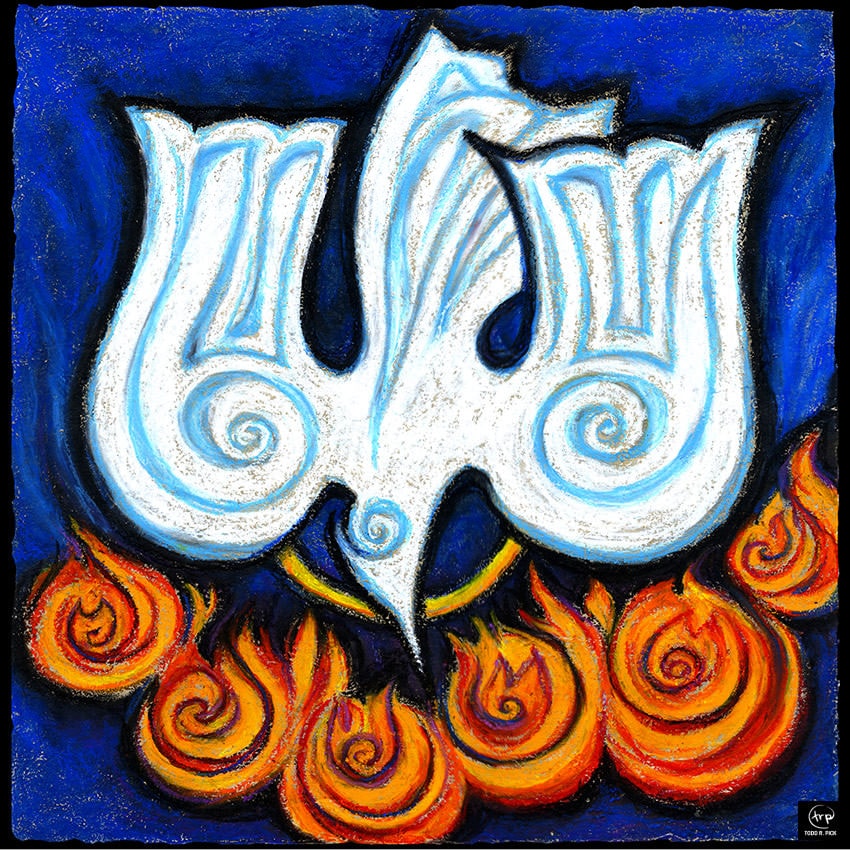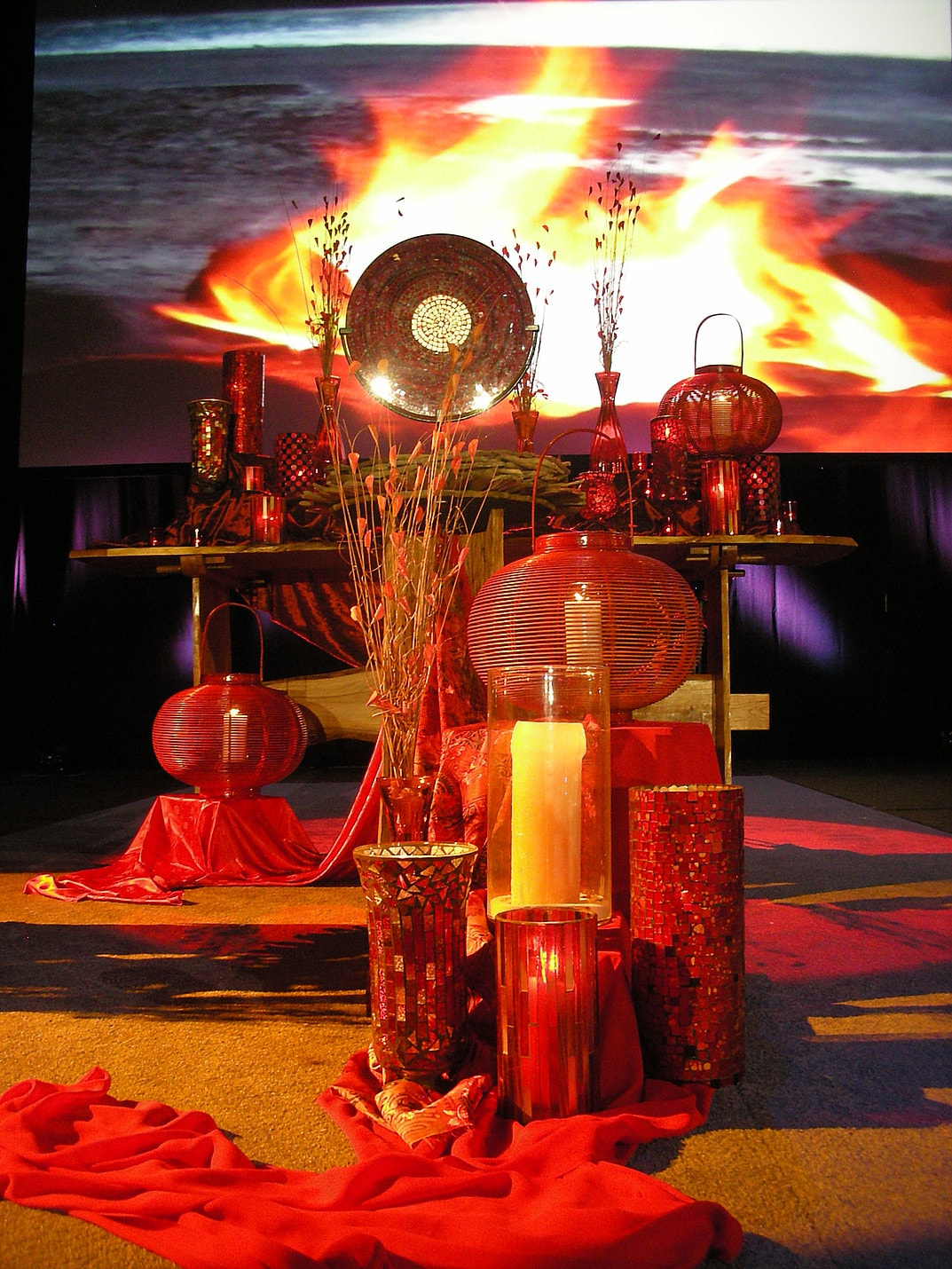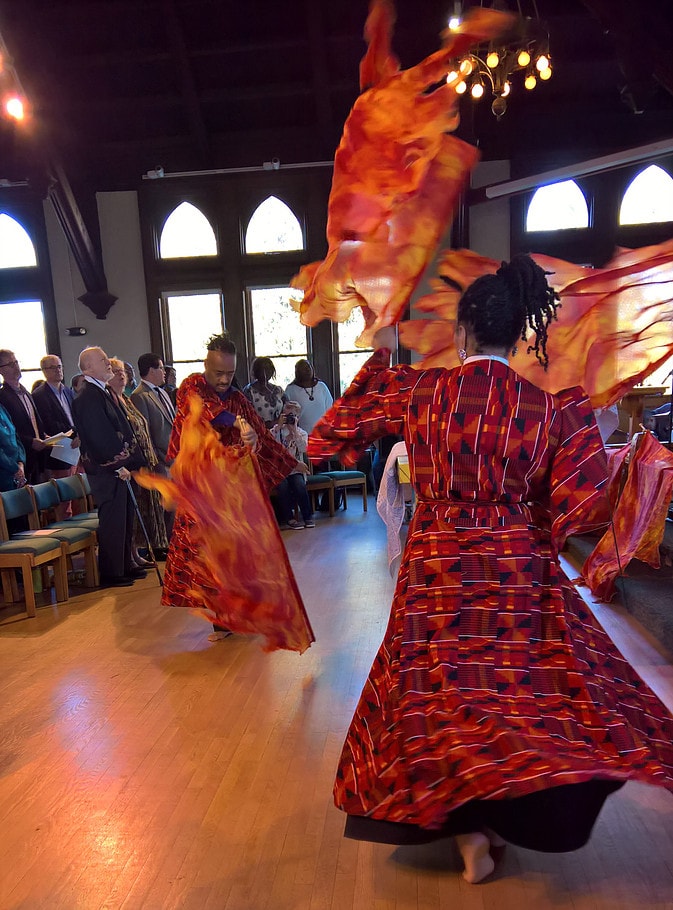Pentecost is a day on the Christian calendar that almost commands all your senses to wake up and celebrate!
Look at this scripture passage:

When the day of Pentecost had come, they were all together in one place. 2 And suddenly from heaven there came a sound like the rush of a violent wind, and it filled the entire house where they were sitting. 3 Divided tongues, as of fire, appeared among them, and a tongue rested on each of them. 4 All of them were filled with the Holy Spirit and began to speak in other languages, as the Spirit gave them ability. (Acts 2:1-4, NRSV)
So much action!
“Pentecost is our day to celebrate the ‘birthday’ of the Church,” said Marcia McFee. An author, worship designer and leader, professor, preacher and artist from San Anselmo, California, McFee is recognized as a foremost worship artists.
“The [Acts 2:1-4] scripture passage is often used on Pentecost to tell the story of how Jesus’ disciples were urged to continue his ministry,” she said.
“We can draw so much rich symbolism from this passage: the community gathered together, a violent wind from heaven, tongues of fire,” McFee continued. “For dramatic arts, what about giving out feathers to represent the Holy Spirit like a dove? Or use tea lights to echo the tongues of fire? Or music that reflects on ‘holy fire’ and the movement of the Holy Spirit?”

Grace Cox-Johnson is a nationally-known visual artist from Kansas City, Missouri., whose work has been featured at the United Methodist General Conference. She said Pentecost is a unique day of celebration in the church because it is for the church and not so much for those outside the church.
“The church’s job is to draw people to Christ,” she said. “But Pentecost is maybe the one day that is about the people already in the church. Most colors in the church are cool and calm. You see lots of neutrals, blues, greens. We look at these as inviting and welcoming.
“But Pentecost is different. Pentecost is about wind and fire. We use red, hot pink, fuchsia and orange. There is so much passion in these colors.”
Cox-Johnson is convinced that involving all the senses in worship makes for a more inclusive and meaningful experience for worshippers.
For Pentecost, she said, “Do practical things. Anything that has to do with wind — fans, pinwheels, kites, helium balloons. Nothing is more vibrant than the thought of the Holy Spirit moving like a mighty wind.”

The Rev. Todd Pick, pastor of Wesley Chapel United Methodist Church in Gholson, Texas is an accomplished artist. He said when you read about Pentecost in Scripture, you see that it was a passionate, visual, sensory-filled experience for the people there. He believes today’s worshippers can have a similar experience.
“Pentecost has always been a holy day of celebration and drama,” he said. “Cathedrals in Italy were known to drop rose petals through secret openings in the ceiling to simulate descending tongues of fire. There is such richness in something so simple that is so impactful.”
He offered a list of ways to incorporate the senses in worship to better embody the unpredictable, creative spirit of Pentecost.
SPEECH
Pentecost offers a reminder that God does not have one language, but speaks to us in our diversity.
- Station multiple readers around the sanctuary to read scripture, litanies or prayers in different languages.
- Learn and sing a new “heart song” in the heart language of another culture.
COLOR
- Drape the sanctuary with red fabric in new ways -- overhead, up high, down the aisles. Online wedding and prom supply stores have large bolts that are affordable.
- Announce and invite everyone to wear red!
MOVEMENT
- Give everyone a “Spirit stick” — a short dowel rod with a red ribbon attached. These can easily made by hand or ordered online in bulk (search for “ribbon wands”). Invite the whole congregation to wave them every time the word “Spirit” is spoken.
- In the final weeks of Eastertide, set out long strips of orange and yellow florist ribbon on a table in your narthex, foyer or fellowship hall. Invite everyone to write a word of “vision” or “dream” for the church. Attach the ribbons to a “T-pole” so that the ribbons can be processed and waved overhead.
- Let dancers move through the space with large flags in red or fiery tones. Let movement and color allow the gathered community to become a living flame.

SYMBOL
- Visuals typically include images of fire, wind and dove. Consider what additional metaphors come to mind to show the Spirit’s relation to water, creation, gifts and fruit.
- Check out Pinterest to see how others have crafted mobiles, banners and processional streamers. You’ll also find ways to incorporate objects like kites, balloons and pinwheels.
SOUND
- Consider using wind chimes, which tell us when the wind is blowing, as a threshold moment to enter and “stir” our worship.
- Play recorded sounds or use percussion instruments to create a “storm” of fire and wind.
GESTURE
- Teach the congregation to sign “Holy Spirit” using American Sign Language; repeat this gesture throughout the call to worship or short litany.
BREATH
- To contrast the chaotic sound of multiple tongues and boisterous wind, teach the congregation a breath prayer so that we can practice “breathing with” (literally “conspire”) the Spirit. Use this prayer technique to enter or close the pastoral prayer.
Pentecost is an important Sunday for the Church. It reminds us that God has big, loud, brilliant, dramatic plans for us as Christians. Make this day a reminder of what God did for us on that day — God came from heaven and gave us the precious gift of the Holy Spirit!
Polly House is a freelance writer and editor based in Nashville, Tennessee, USA.
Originally published on May 15, 2019.

